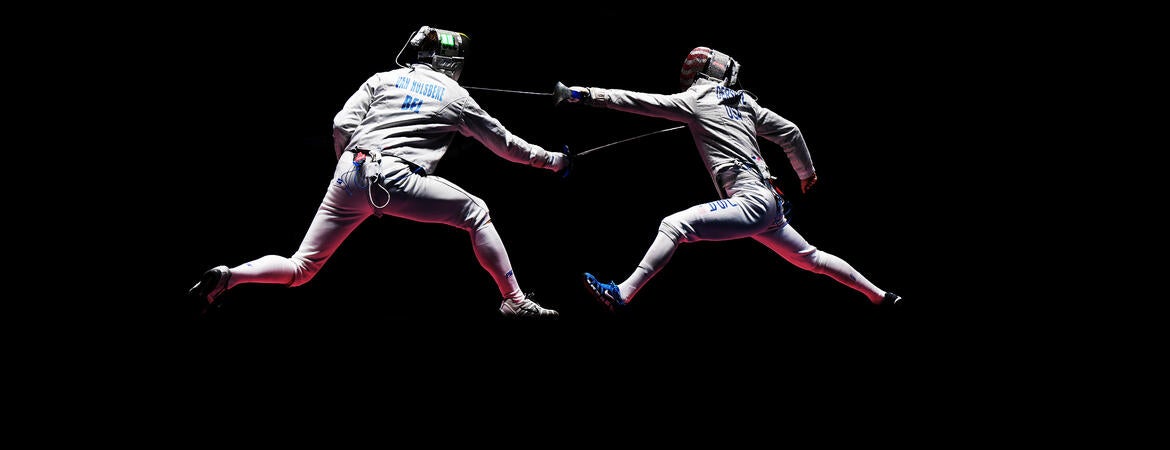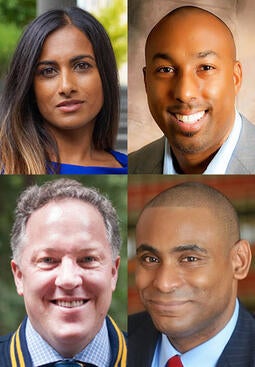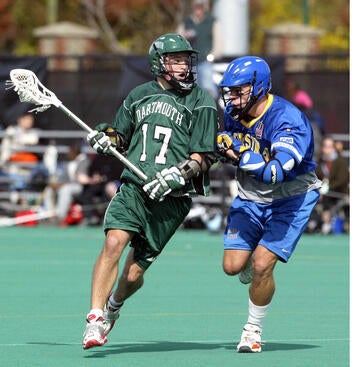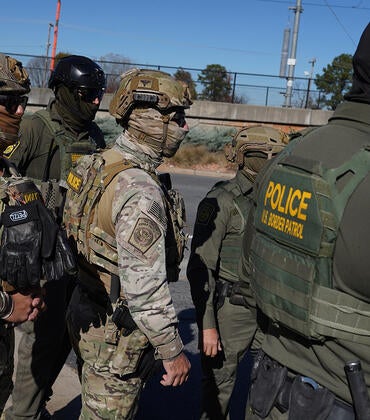
High school students wanting to get into an elite university may want to first gain mastery of a sport like golf, fencing, crew, lacrosse, or squash.
The U.S. Supreme Court this year struck down race-conscious admissions that have helped universities diversify their campuses for nearly a half century. But for more obscure sports, it left intact admission preferences that disproportionally benefit well-resourced white students, a recent quantitative analysis led by University of California, Riverside, scholars has found.
The benefits for white applicants, however, do not stop with athletics, the analysis found.
The researchers found that elite universities also lower the bar for mostly white applicants collectively through admissions practices such as “legacy” applicants - the children, grandchildren, or great-grandchildren of alumni, and the admissions of the children of faculty and vaguely defined dean’s choices.
“Access to elite and highly selective universities serve as gatekeepers to powerful leadership positions and intervening on how those admissions processes are biased matters,” said Uma M. Jayakumar, the lead author of the UCR analysis and an associate professor of education at UCR. “For example, eight out of the nine justices that determine the fate of affirmative action, abortion, voting rights laws -- went to Harvard, Princeton or Yale.”
Entitled “Race and Privilege Misunderstood: Athletics and Selective College Admissions in (and Beyond) the Supreme Court Affirmative Action Cases,” the analysis was published recently in the UCLA Law Review. In addition to Jayakumar, authors include UCR education professor Eddie Comeaux; UCR ethics, compliance and civil rights professional and UCLA research associate William Kidder; and UCLA law professor Sherod Thaxton.
The paper considers admissions into Harvard University, one of the nation’s most competitive academic institutions. Like other Ivy League schools, a Harvard education is a major determinant of elite-status wealth.
The UCR study cites research that found 43% of Harvard’s white students were admitted through what researchers termed an “ALDC” status (athletic, legacy, dean’s preferences, and children of faculty) between 2014 and 2019, and that three quarters of these students would have been rejected without their ALDC status. Comparatively, less than 16% of Harvard’s Black, Asian American, and Latino student were ALDC students.
“Harvard’s admissions preferences, in effect, constitute a form of affirmative action for white applicants,” the paper says.
The research on ALDC admissions cited the by the authors was led by Duke University economist Peter Arcidiacono, who served as an expert witness for anti-affirmative action Students for Fair Admissions, Inc., or SFFA, in the landmark U.S. Supreme Court case that in June struck down race-conscious college admissions by a 6-3 vote.
“We used Arcidiacono’s own study to disprove the argument he and SFFA advanced in the case,” Jayakumar said.
Created and funded by conservative activist and legal strategist Edward Blum, the SFFA successfully convinced the court’s conservative majority that Harvard’s and the University of North Carolina’s affirmative action admissions for Black students violated the constitutional rights of Asian American students.
The UCR-led analysis found that ALDC advantages for white students cause greater harm to Asian Americans than affirmative action.
The UCR analysis asserts evidence presented to the Supreme Court offered a skewed view that affirmative action was the only form of preferential admissions that impacted Asian American students.
If ALDC admissions were eliminated, the number of Asian American students at Harvard would likely outnumber white students, the analysis found.
“If Edward Blum and SFFA were genuine about wanting to support Asian American applicants, they would have gone after facially race-neutral considerations like athletics, which can constitute nearly 20% of the student body at Ivy league schools and are definitely skewed to advantage white students,” said Jayakumar.
Sports admissions generally leave behind economically disadvantaged students, especially those from inner cities, the paper argues. While college football and basketball garner the most media attention, elite universities also fill the rosters of golf, fencing, crew, tennis, and lacrosse teams, among other “country club” sports. These sports are fostered mostly in private prep schools, or public schools in predominately white, wealthy school districts with greater tax revenues.
The UCR analysis provides data showing our nation’s most competitive elite universities and colleges have much higher proportions of students participating in sports than publicly funded higher education institutions. For example, more than 16% of Harvard, Yale and Princeton undergraduate students participate in National Collegiate Athletic Association Division I sports, compared to only 2 to 5% of students at the leading public universities.
Moreover, two thirds or more of the student athletes at Dartmouth College and Harvard, Brown, Cornell, Dartmouth, Penn, and Yale universities are white, the analysis found.
A telling example is the sport of lacrosse, a sport invented by and still practiced by the Haudenosaunees and other Indigenous peoples in what is presently the U.S. and Canada, the paper points out.
In 2019, Iroquois Nationals lacrosse team (now called the Haudenosaunee Nationals), placed second in the world indoor lacrosse championships, besting the Team USA, which placed third. The Haudenosaunees, is a confederacy of the Seneca, Cayuga, Oneida, Onondaga and Mohawk peoples and they are planning to field a team in the 2028 Olympics under their own flag.
Yet, despite such sports talent, Dartmouth College admitted only about six indigenous freshman athletes in between 2006 and 2014. Such scant Native American representation occurred even though Dartmouth’s colonial era charter states that part of the college’s mission is “for the education and instruction of Youth of the Indian Tribes in this Land.”
While affirmative action was eliminated for racially minoritized and disenfranchised students, there’s a back door open for white and privileged students through “country club” sports and legacy considerations, she said.
“That’s the real admissions scandal, far greater than the ‘Varsity Blues Scandal,’ where some celebrity and wealthy parents infamously bribed college sports officials to secure an admissions spot for their nonathletic child. The only difference is that white and wealthy advantages through athletics and legacy are hidden in plain sight and protected by our legal system,” Jayakumar said.
Cover image: A fencing in the 2016 Olympic Games by Matthias Hangst/Getty Images
Related links:
‘Race Neutral’ Is the New ‘Separate but Equal’ by Uma M. Jayakumar and Ibram X. Kendi, The Atlantic
UCR professor’s work cited in Justice Sotomayor’s dissent -- UCR News
Q&A: What does the end of affirmative action mean for UCR? -- UCR News
UCR remains staunchly committed to educating a diverse student body -- UCR News





